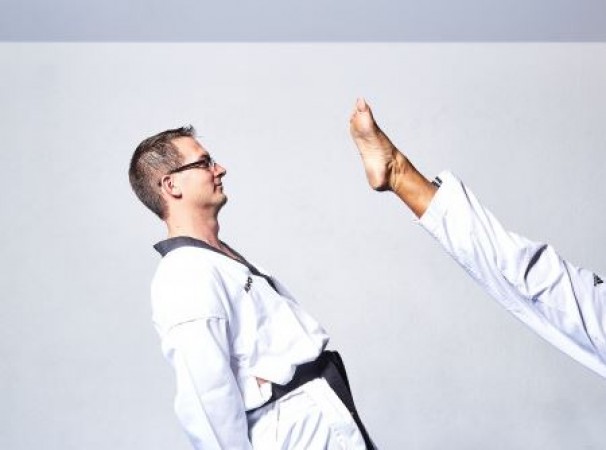
Silat, the traditional martial art of Southeast Asia, has a rich history that dates back centuries. It is a unique martial art that incorporates both striking and grappling techniques, making it a formidable and well-rounded combat system. In this article, we will explore the origins, key features, training methods, and cultural significance of Silat, shedding light on this fascinating art form.
1. The Origins of Silat
1.1 Historical Roots
Silat's origins can be traced back to the ancient warriors of Southeast Asia. It has its roots in Malay, Indonesian, Filipino, and other indigenous cultures of the region. The exact origins of Silat remain somewhat shrouded in mystery, with different styles and lineages attributing its creation to various legendary figures and historical events.
1.2 Cultural Significance
Silat is not just a martial art; it is an integral part of the cultural heritage of Southeast Asia. It plays a vital role in traditional ceremonies, dances, and rituals. The art of Silat reflects the values, customs, and beliefs of the local communities, making it more than just a physical combat system.
2. Key Principles and Concepts
2.1 Pencak Silat and Silat Melayu
Silat is often referred to as "Pencak Silat" in Indonesia, where "Pencak" denotes the performance aspect of the art. In Malaysia, it is known as "Silat Melayu," emphasizing the art's Malay heritage. Despite regional variations, the core principles of Silat remain consistent across different styles.
2.2 The Concept of "Jurus"
In Silat, "Jurus" refers to a set of pre-arranged movements and techniques. Practitioners learn Jurus as a way to internalize essential combat sequences. The execution of Jurus helps develop muscle memory, reflexes, and proper body mechanics.
2.3 The Philosophy of "Inner Power" or "Tenaga Dalam"
Silat practitioners often explore the concept of "Tenaga Dalam," which translates to "Inner Power." It involves harnessing internal energy to enhance striking power and self-awareness. This principle emphasizes the importance of mental focus and spiritual growth alongside physical training.
3. Training in Silat
3.1 Basic Stances and Footwork
Training in Silat begins with learning foundational stances and footwork. These form the building blocks of the art and serve as the platform for more advanced techniques.
3.2 Striking Techniques
Silat includes a wide array of striking techniques, such as punches, kicks, elbows, and knee strikes. These strikes are often delivered at close range and with swift movements, making them highly effective in combat situations.
3.3 Grappling and Locking Techniques
In addition to striking, Silat practitioners also learn grappling and locking techniques. These maneuvers enable them to control an opponent at close quarters and even take the fight to the ground if necessary.
3.4 Traditional Weapons Training
Silat's curriculum also encompasses training with traditional weapons such as the keris (dagger), parang (machete), and sambut (whip). Weapon training adds an extra layer of complexity to the art and helps practitioners become versatile combatants.
4. The Influence of Silat on Modern Martial Arts
4.1 Silat in Mixed Martial Arts (MMA)
In recent years, Silat has gained recognition in the world of Mixed Martial Arts (MMA). Many MMA fighters incorporate elements of Silat into their fighting style, appreciating its diversity and effectiveness in both striking and grappling.
4.2 Self-Defense Applications
Silat's practicality extends beyond competitive fighting and self-defense applications. Its principles can be adapted for real-life scenarios, making it a valuable tool for personal safety.
5. Cultural Preservation and Global Spread
5.1 Preserving Silat's Heritage
In an increasingly interconnected world, efforts to preserve Silat's cultural heritage are essential. Various organizations and practitioners work diligently to pass down the art to future generations and ensure it continues to thrive.
5.2 Silat Beyond Southeast Asia
As more people around the globe discover the beauty and effectiveness of Silat, its popularity grows beyond Southeast Asia. Schools and clubs dedicated to teaching Silat are emerging worldwide, fostering cultural exchange and appreciation.
Silat, the traditional martial art of Southeast Asia, is a captivating blend of striking and grappling techniques deeply rooted in the region's history and culture. From its mysterious origins to its practical applications in modern combat sports, Silat remains a symbol of strength, discipline, and cultural identity. As we celebrate its past and present, let us also embrace its future, ensuring that this treasured art form continues to inspire and empower generations to come.
Pakistan Women's Squad for Asian Games; Anoosha, Shawaal Earn Maiden Call-ups
Saudi Club Al-Hilal Stuns Football World with Jaw-Dropping $332 Million Bid for Kylian Mbappe!
Football Phenom Ary Borges Makes History with World Cup Hat-Trick, Surpassing Pele and Ronaldinho!